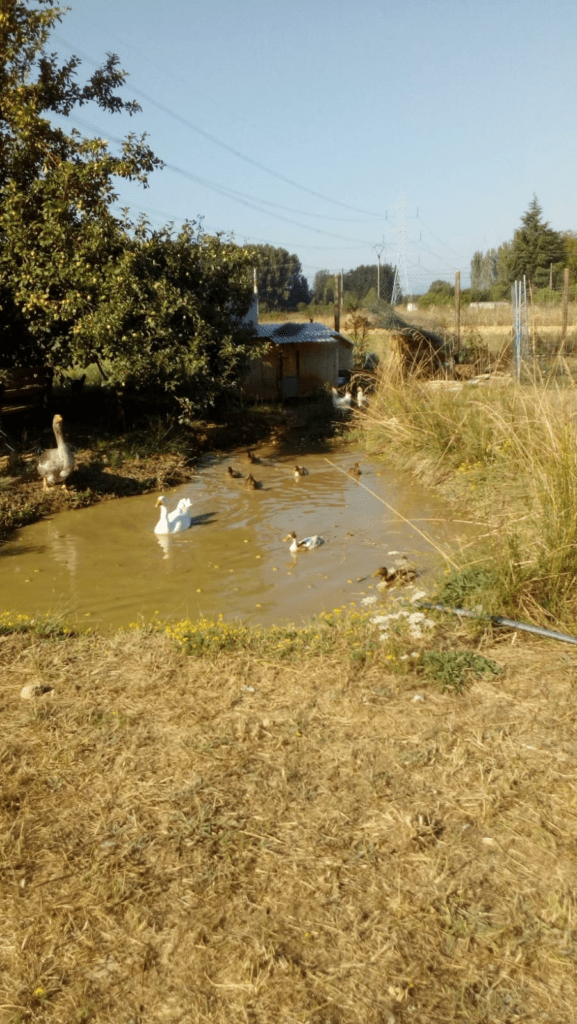Spain. El Bierzo. The Food and Agriculture Organization (FAO) and the European Union (EU) claim biodiversity, small agroecological farms, and the revitalization of rural areas assure food security and fight the climate crisis. There are many projects in Spain that implement exactly that. Also, thanks to COVID-19, more and more people are looking to move back to the countryside. Encina Alvárez, a 52-year-old IT engineer, started her agroecological project in northern Spain 15 years ago. She, like many other rural women, will have to close down this year. Encina shares with Transcontinental Times what forces them to close, what is needed to help these projects, and why it is so important to sustain them, especially during the current crisis.
Local knowledge and tradition are cultural patrimony
Encina grew up in a small village. Although she enjoys the cultural diversity a city has to offer, she decided to move back to her natal Bierzo to start an agroecological farm. She wanted to integrate her knowledge with the local traditions that she saw growing up. In addition, her husband suffered from multiple sclerosis and a time-consuming job. She knew a change in habits and lifestyle would be beneficial for him. Since she had a house and land already, she took the step.
“We are what eats what we eat”
Bioencina is a circular economy and organically certified agroecological farm. As the FAO explains, the integration of animals and horticulture is essential to recover the soil’s fertility. Encina wanted to recover local traditions as well, what she considers to be her cultural patrimony. She is part of the Bierzo’s organic producers association, AGRELE, and local women groups.
“The fruits and vegetables we eat from the supermarket are synthesis products. I live and produce respecting the environment, I use bio-fertilizers. We are what eats what we eat. How we grow meat and vegetables translates into how healthy we are. My husband is still with us and he’s been having less and less crisis ever since we changed our diet and life habits.”
Aside from health benefits, following natural cycles diminishes maintenance costs and labor on a farm. Encina strived to create a close cycle: all that lives in her farm has multiple uses and nothing goes to waste, very much like in a permaculture farm. And much like in permaculture projects, coherence has an important role to play. “The way I produce is the way I live,” she adds.
CAP subsidies issues
Encina shares that the resources available to small farmers, especially agroecological farmers, is minimal at best, “If you are far from cities, prospective clients cannot reach you. There are no specialized agroecological markets in the area, we cannot compete in pricing with subsidized supermarket products, and the administration does not promote our products. Chemicals and petrol are subsidized but not agroecology. Large farms are subsidized but not the small producer. There is no support to help change consumer habits, no visibility offered. They tell you [to] use the internet. And that’s as far as their business guidance goes, even when they give you money for your project.”
Subsidies impoverish small farmers
In the last years, and thanks to a change of CAP policies, many projects developed by rural women have received subsidies. Contrary to what one might expect, this has actually accrued their problems.
“When CAP subsidizes you, you have to stay open for five years even if the project is not profitable. Otherwise, you have to give the money back. Also, in order to be eligible, you need to buy brand new material, instead of second hand or mutualized resources. For example, each preserve producer has to have their own autoclave and sterilized white room even if they live next door. Materials cost so much that apart from the subsidy people have to ask for credits. This is insane. They don’t help you sell your products and you stack debts,” Encina said.
Common structural problems for small producers

Encina explains that if you have grazing animals on your farm you have to pay yearly for them, even if you don’t sell them, “So administrative expenses keep mounting up for no logical reason. How can they justify this? This is a small farm, animals help me produce. My family sold whatever was produced, there was no scarcity. To apply conditions for large companies to us small farms is counterproductive.”
Small organic farmers are priced out of the market, Encina continues, “The system favors larger farms, even if organic. Small producers cannot secure supply and that’s what distribution requires. Organic certification is expensive for a small farmer and without it, they cannot get into organic or [mainstream] supermarkets.”
Administration needs to look reality in the eye
Encina believes we need more agroecological projects to recover soil, social justice, biodiversity, health, and patrimony. People mainly use the land for large mono-crop extensions against international agencies’ global advice. The EU wants the same thing, although recent CAP negotiations point in the opposite direction.
“I might reopen, diversify, apply new strategies, organize family visits… But if they really want us to grow, the administration needs to focus on the problem. It needs to have a closer look at reality. And think, what are our ethics? It has to truly help us overcome structural problems,” Encina explains.
She continues by saying, “We throw away food due to market standards, we indebt small farmers, and we have a food security problem. If we lose land, we lose tradition, we lose culture, and we lose identity. It is very sad but maybe is what it has to be. I don’t know what’s best. What I know is that diversity is life and we keep homogenizing our culture.”



